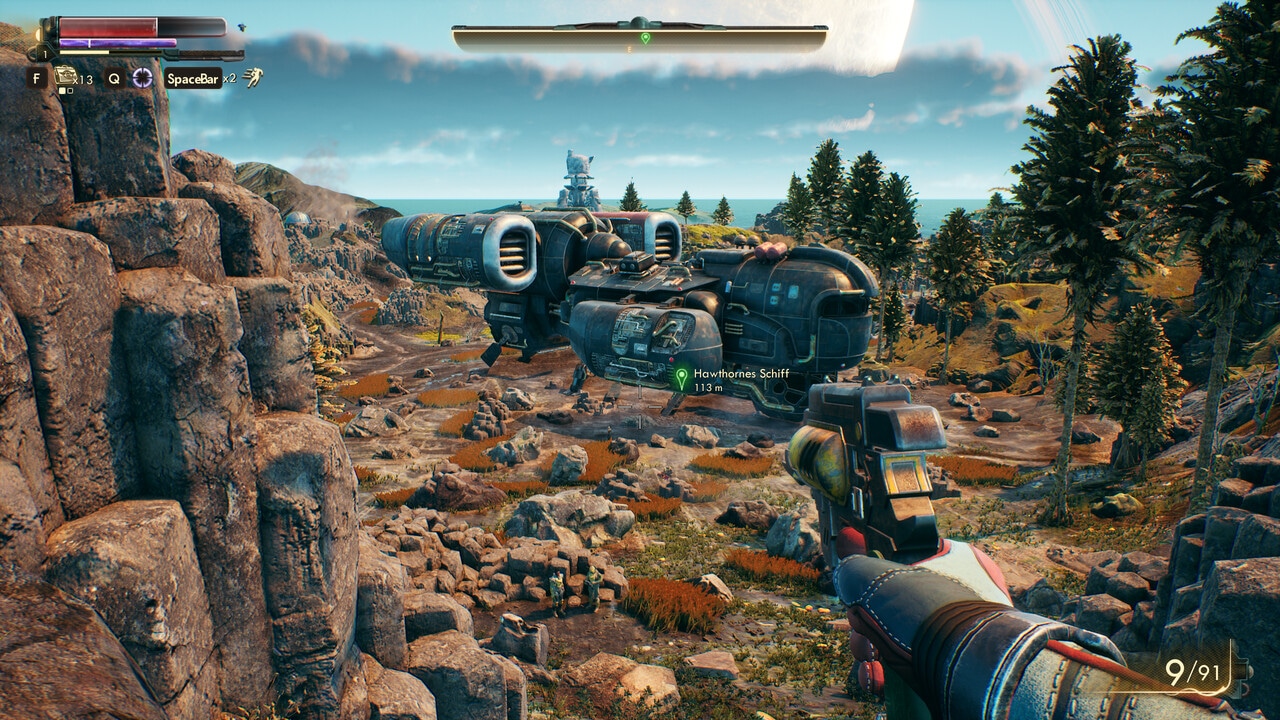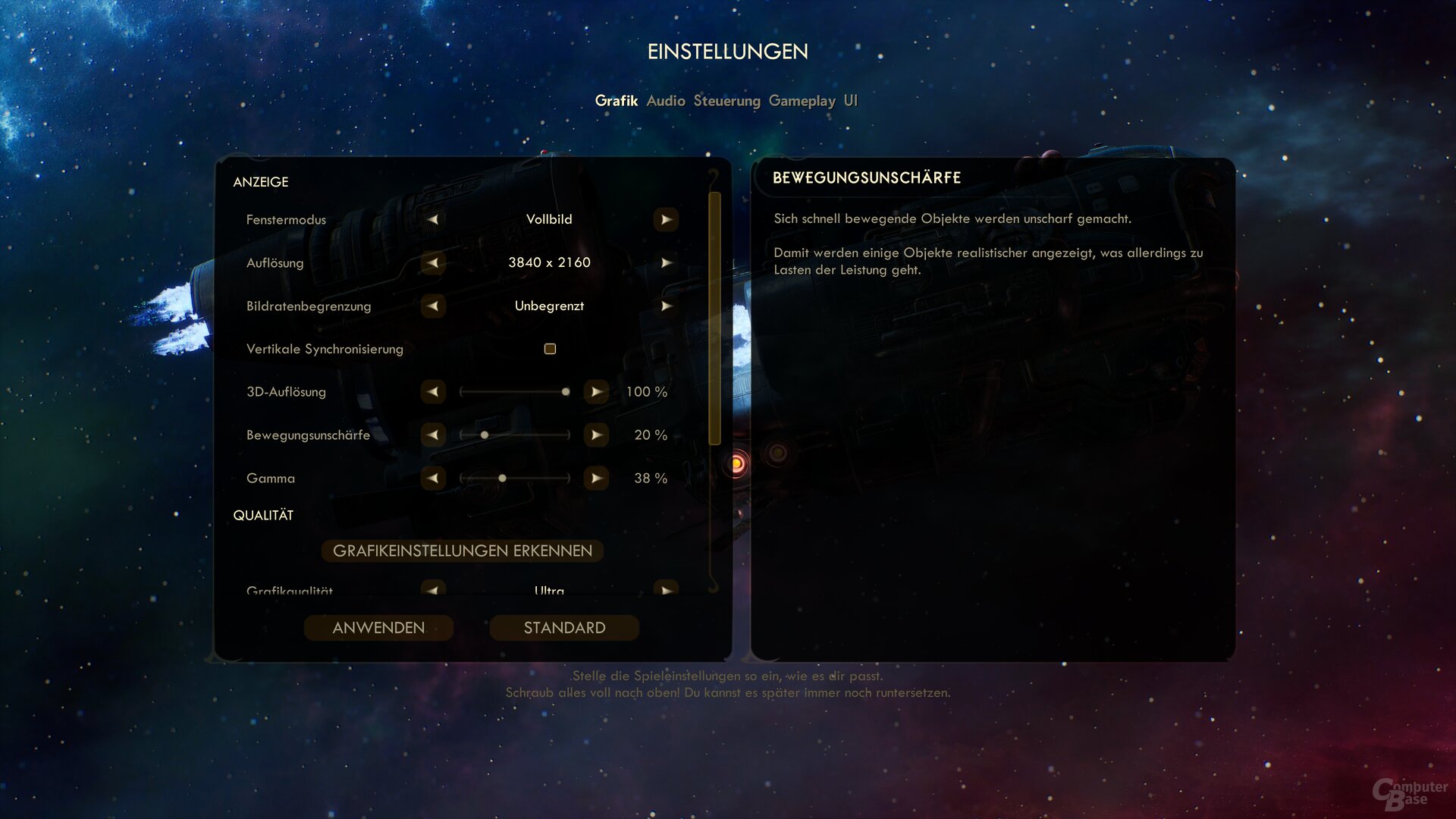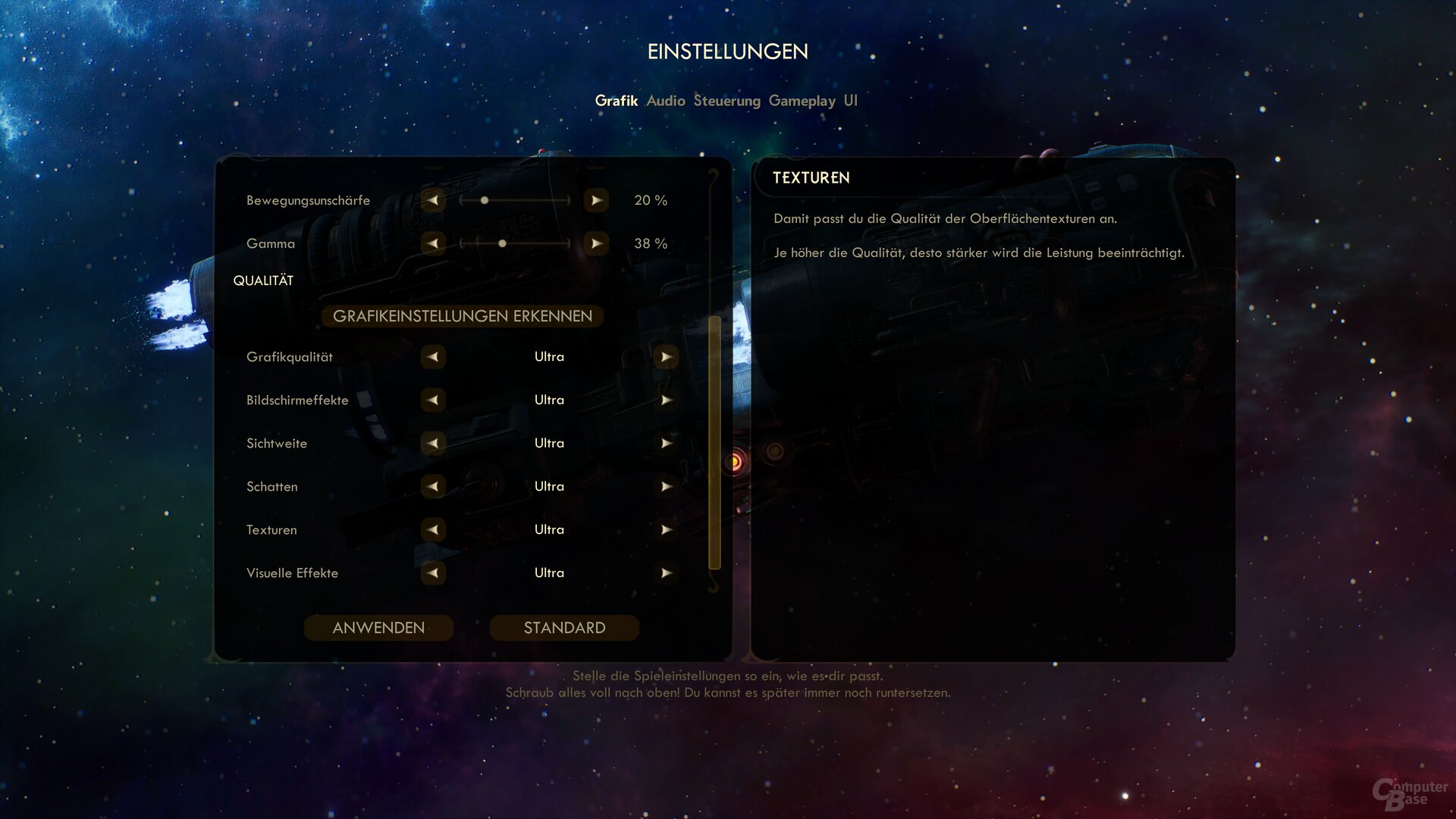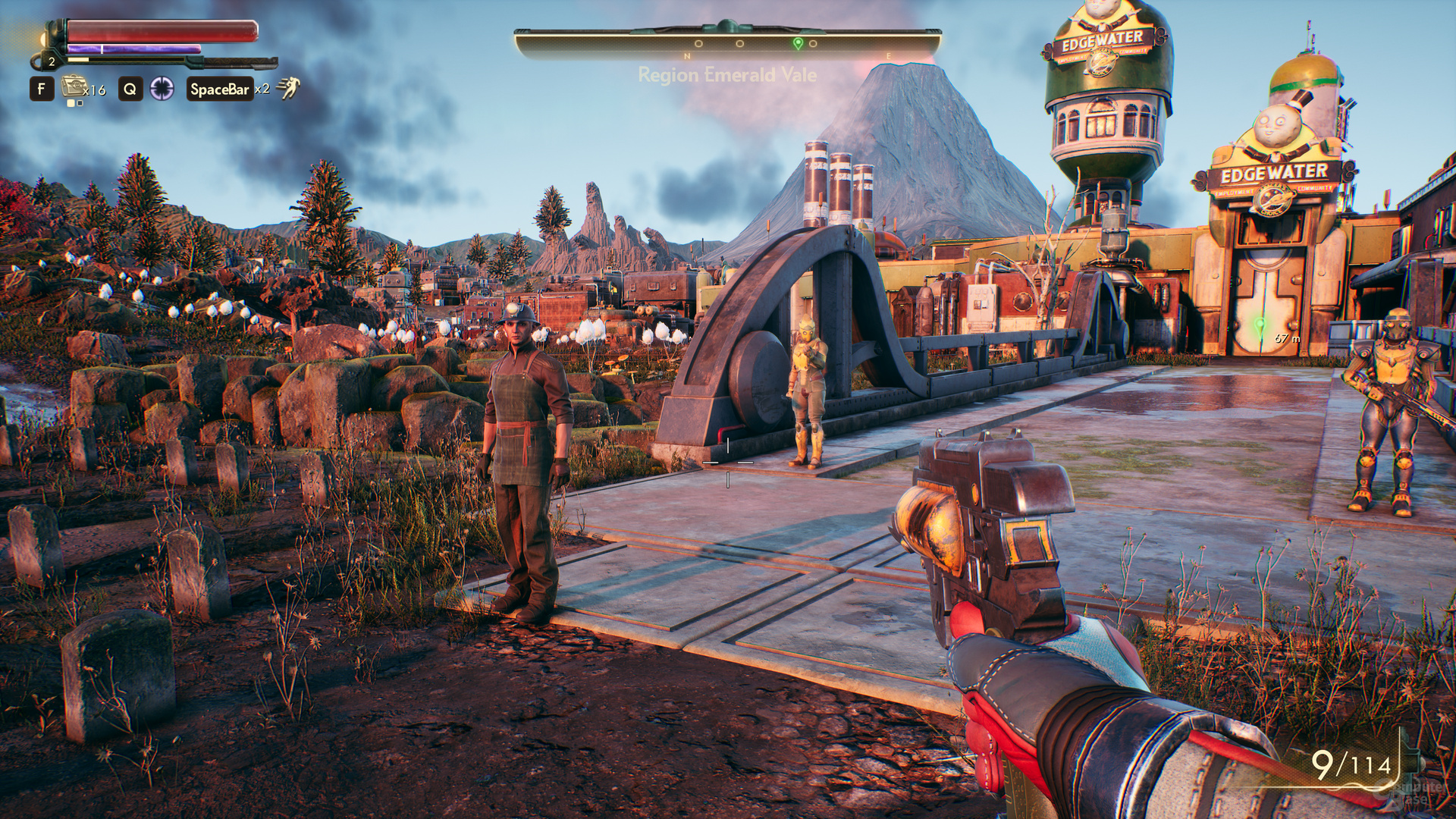– The Outer Worlds was released a week ago. The title is popular with the trade press and players. So it is high time to take a closer look at the technology of the PC version. Even for an “AA” title, however, this is only average. The optics are correct, but there is a lack of optimization.
The Outer Worlds by Obsidian Entertainment was released on the PC a week ago and is very well received by both the specialist press and the players. The opinions are clear: The Outer Worlds is the much better fallout. The game is based on the well-known and popular role model, although it was certainly an advantage that Obsidian Entertainment was commissioned for Fallout: New Vegas, which also received very good reviews at the time.
Despite “only” AA resources, the overall visual impression is correct
At this point, the game itself is only marginally involved. As usual, BitcoinMinersHashrate primarily takes a look at the technology of the PC version. And you can tell by the fact that it is not an AAA production with what feels like an infinite number of resources during development. But that is not necessarily a guarantee of quality. Compared to Fallout 76, The Outer Worlds doesn't have to hide, for example, because the title definitely doesn't offer AAA technology despite AAA resources. In comparison to the last blockbuster games such as Call of Duty: Modern Warfare or Ghost Recon Breakpoint, on the other hand, you immediately notice that The Outer Worlds technically plays at least a whole league below it.
The art design is still successful and the foreign worlds appear harmonious with the colorful look. The many and often chic technical tricks of the big titles are missing and there are some weaknesses, but the overall picture fits. The real problem is that Obsidian Entertainment does not seem to have the Unreal Engine 4 under control. Because otherwise it seems difficult to explain that the game does not run particularly well on high-end computers.
At AMD in a bundle, but without Radeon features
The Outer Worlds is currently available for free when you purchase selected Ryzen processors or Radeon graphics cards. Graphics features from AMD, however, have not found their way into the game. The currently popular focus filter FidelityFX is also missing. Since the title uses DirectX 11, resharpening on a Radeon is currently not possible without external tools.
The PC version of The Outer Worlds only offers a simple graphic menu of the classic type and does without numerous, now often offered comfort functions. There are graphics presets and five separate options, that's about it. After all, there is in-game upsampling, with which the set resolution can be reduced to up to 17 percent. Downsampling for better quality is not used.
Five presets and a consistently active anti-aliasing
With "Low", "Medium", "High", "Very High" and "Ultra", The Outer Worlds offers five different graphic presets, whereby "Ultra" also represents the maximum level of detail. The visual differences between "Ultra" and "Very high" are slight, but quite striking: The shadow quality is reduced a good bit with "Very high". It shows fewer details and is softer. In addition, the surrounding occlusion works less intensely. Some objects are captured less, others not at all.
The difference between "very high" and "high" is very clear depending on the scene, because there are no more reflections. If you then look into a puddle, for example, you only see a silver glow. This is pretty irritating and looks "cheap". Speaking of reflections: these are screen space variants. If the object to be reflected is not in the image, it will not be reflected either. Apart from that, the shadow details are further reduced with "High".
On screen shots, the differences between "high" and "medium" must again be looked for with a magnifying glass. In contrast, a much more aggressive LOD is noticeable in motion, quite a few objects now appear as if out of nowhere. With the low preset, the LOD works even more eye-catching and the shadows are moved back further.
The game basically only changes the shadows, the reflections, the surrounding masking and the LOD with the options, apart from that, hardly anything is reduced.
From the editorial team's point of view, "Very high" can be reduced at any time without major visual restrictions. With "High" the missing reflections are annoying, but otherwise it remains a useful compromise. On the other hand, "medium" should only be used in an emergency.
Graphics presets in The Outer Worlds
Low-Preset
Central Preset
High-Preset
Very-high-Preset
Ultra-Preset
Low-Preset
Central Preset
High-Preset
Very-high-Preset
Ultra-Preset
There are differences in the presets
AMD and Nvidia graphics cards behave differently in the presets. The GeForce RTX 2070 only gains 5 percent more FPS when changing from “Ultra” to “Very high”, the Radeon RX 5700 XT only 3 percent. The boost with the high preset, on the other hand, is significantly greater: A further 33 percent FPS can be measured on the Nvidia graphics card, with the AMD accelerator it is even 42 percent. RDNA doesn't seem to like anything at the higher level of detail. The graphics cards then behave similarly with the other presets. The middle setting brings an increase of 14 percent on the GeForce and 18 percent on the Radeon, the low preset then accelerates the frame rate by 9 and 7 percent respectively. All in all, there is quite a lot of tuning potential.
The anti-aliasing is effective, out of focus and always on
The Outer Worlds anti-aliasing is consistently active. There is no switch-off option and even the low preset uses anti-aliasing. That doesn't work perfectly, but it works very well. Obviously there is a temporal component because the entire image is smoothed. The picture flickers relatively little even in low resolutions like 1,920 × 1,080, so the picture impression is pretty calm.
However, the anti-aliasing places quite a bit of blurriness over the image, which is particularly pronounced in Full HD. The effect is visibly reduced in higher resolutions, and the image is sharp in Ultra HD. Since the game does not offer a resharpening option, external tools have to be used. Nvidia's focus filter, which is now integrated in the driver, works effectively against blurring and only slightly intensifies the flickering. AMD's competitor technology RIS does not currently work in DirectX 11 and therefore not in The Outer Worlds. Since no FidelityFX is integrated in the Obsidian title, AMD currently does not offer any options for resharpening the game.
Mediocre textures with mediocre memory requirements
The textures in The Outer Worlds are average at most. You shouldn't look at the surfaces too closely and above all too closely, because then you can simply see the lack of real details. But at least the memory consumption is low. 4 GB are sufficient for Full HD and maximum texture details. For 2,560 × 1,440 and 3,840 × 2,160, the graphics card should then have 6 GB. It doesn't need more.
On the next page: GPU and CPU benchmarks, frame times and conclusion


















